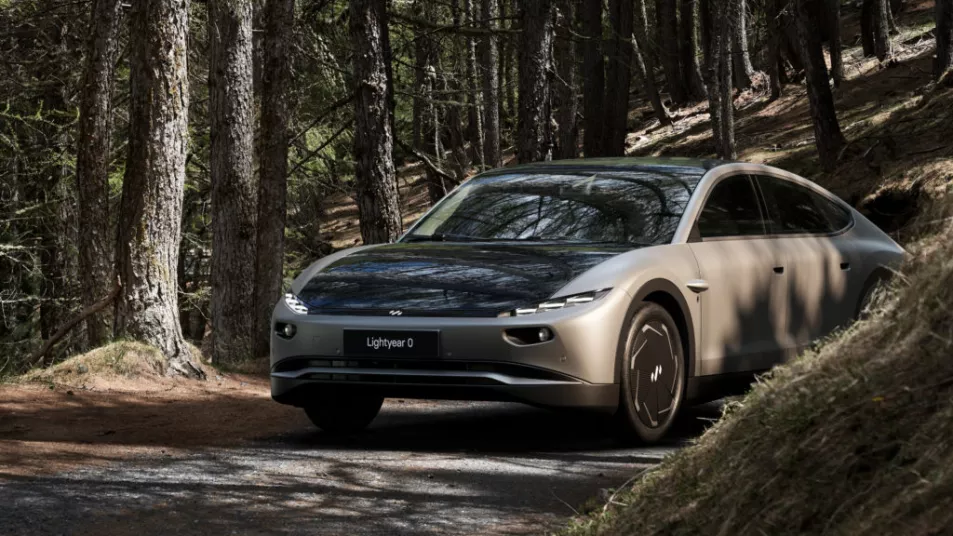Buzz Lightyear, Disney and Pixar’s occasionally un-self-aware astronaut hero has returned to cinemas this week.
It’s a return to a character first created by Pixar in 1995 for the original Toy Story. Back when Buzz was first seen on screen, and voiced by comedian Tim Allen, he famously inquired of his new toy friends: “Do you people still use fossil fuel, or have you discovered crystallic fusion?” Confused, his cowboy counterpart Woody informs Buzz: “Well, we have Double-As…”
Fast forward 27 years and we need rather more than Double-A Duracells (other battery providers are available…). With the world in the grip of both an energy crisis and a climate crisis, the need to move to sustainable forms of transport energy has never been greater, but it’s being stymied by a toxic combination of sluggish legislation, slow charging system roll-outs, and consumers either not having the cash to make the great electric leap, or simply not yet trusting that they’ll be able to charge when they need to.
Solar power
Solar power seems like an obvious step — all of Earth’s energy, fundamentally, comes from the sun, it’s just that we’ve been extracting it from carbon-heavy sources for too long. Why not cut out the middle-man and just put the power of the sun straight into your car?
It has been tried. There’s a regular solar-powered car contest in Australia, in which the best vehicles can cover up to 500km at speeds of up to 100km/h, but these are flimsy, flyweight, lab-built specials, not cars you nor I could drive every day.
Well, Dutch startup Lightyear (no relation to Buzz, but presumably not co-incidentally launching in the same week as Pixar’s new film to capitalise on the, er, buzz…) plans to put the sun on wheels, and on your driveway.

The Lightyear 0 is a partly-solar-powered car which its makers claim can top itself up each day thanks to massed ranks of solar cells spread across its roof and bonnet.
“We’re quite obsessed with climate change. It’s a problem that has been getting bigger and bigger ever since we were little kids. The clock is ticking, and we believe that there is a simpler way to accelerate. The question becomes — how do we preserve what we have, and still live the life that we love?” Lex Hoeflsoot, Lightyear’s chief executive and co-founder told Breakingnews.ie.
“Why do we believe solar cars are a smarter solution? Our strategy is two-fold, and we start with the base; phase zero, the preparation phase, which is showing that our cars and our technology can really drive everywhere. Phase zero is not just about getting the concept and the technology ready, it’s also about getting the first cars to the customers.
“There’s no hiding from it, access to charging stations will not keep up with the demand for electric cars. To minimise plug-charging and maximise range, the industry’s strategy, so far, has been to add batteries. That increases the carbon footprint of production and, in turn, boosts weight and the need for high-power charging stations. Our strategy flips that approach. Lightyear 0 delivers more range with less battery, reducing weight and CO2 emissions per vehicle.”


Sleek saloon
Launched this week, the Lightyear 0 is a sleek, low-slung saloon that bears more than a faint resemblance to Mercedes’ experimental electric EQXX concept. It has four-wheel drive, with four- individual electric motors mounted directly to each wheel. The Lightyear 0 uses a relatively compact 60kWh battery (roughly the same size as that used in a Volkswagen ID.3 hatchback) but the company claims a one-charge range of 625km.
Much of that efficiency is down to it being exceptionally slippery through the air — “It is the most aerodynamic family car to date, with a record-breaking drag co-efficient of 0.19Cd. It’s lightweight, and it has a low carbon footprint” said Koen von Ham, Lightyear’s chief designer and co-founder. That figure would make the Lightyear fractionally more slippery than the current aero champ, Mercedes’ production EQS saloon (but behind the still-a-prototype EQXX with its 01.7Cd figure).
That battery can be charged up for use, just as in a regular electric car, but the Lightyear’s party piece is its 5-square metres of solar cells, which the company claims can add up to 70km of extra driving range each day. In theory, that means that once you’ve charged up once, you can go for weeks, perhaps even months, without needing to charge again, assuming you have an average commute — in Ireland, according to the CSO that’s 15km each way, with Laois having the longest average commuting distance at 25km.
Cloudy climates
Will it work only in sun-heavy climates — LA and Sydney? No, says Lightyear. The company is headquartered in Amsterdam, and that’s the climate its figures are based on. “In cloudy climates, based on the average commute of around 35 kilometres per day, you can drive for up to two months before you need to think about charging. In sunnier countries, that could be up to seven months” said von Ham.

The Lightyear is meant to be practical, too with an SUV-sized boot space of 640-litres (helped by it being a big car with a relatively small battery) and it’s not heavy, either — at 1,575kg (claimed) it’s a touch lighter than Renault’s new all-electric Megane.
It also has a generous ground clearance of 183mm, so that it can cope with unmade roads and the occasional bumpy field. Set to be built by Valmet in Finland (which has previously built cars on contract for Porsche and Volvo) the Lightyear will extend its eco-credentials by having body panels made partly of reclaimed and recycled carbon, along with vegan plant-based leather, fabrics made from recycled PET bottles and wooden deco elements from sustainably-restructured rattan palm.
If that all sounds great, then the next question is when can you have one? “The next phase is phase one, and phase one is all about getting to large-scale production. We’re pushing for efficiency because it provides more convenience and more range” said Hoeflsoot. “The first test drives are going to happen in July and August, and then we’re going into production in the autumn, with the first deliveries before the end of this year.”
Cost? Ah, that’s the kicker. Lightyear says that the 0 will be an expensive car, relatively limited in its production run of just 946, and will cost €250,000 (plus local taxes, so expect VRT and VAT to push that higher if the 0 ever reaches Ireland). The good news is that Lightyear has plans for a vastly more-affordable follow-up model, the Lightyear Two, which is tentatively planned for production by 2025, and which could — if all the stars align for Lightyear — cost as little as €30,000 (again, plus local taxes).
Finally, Hoesfloot explains where the name comes from: “Every year, all cars drive 9,460,000,000,000 fossil-fuelled kilometres. That’s a lot. In fact, it’s a light-year. It’s our goal to have the world drive one light-year on solar power by 2035.” It’s not quite infinity, but it’s a start.








